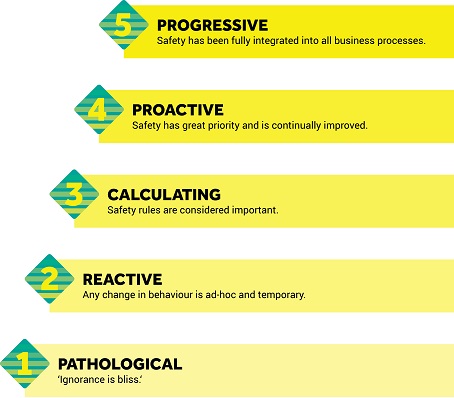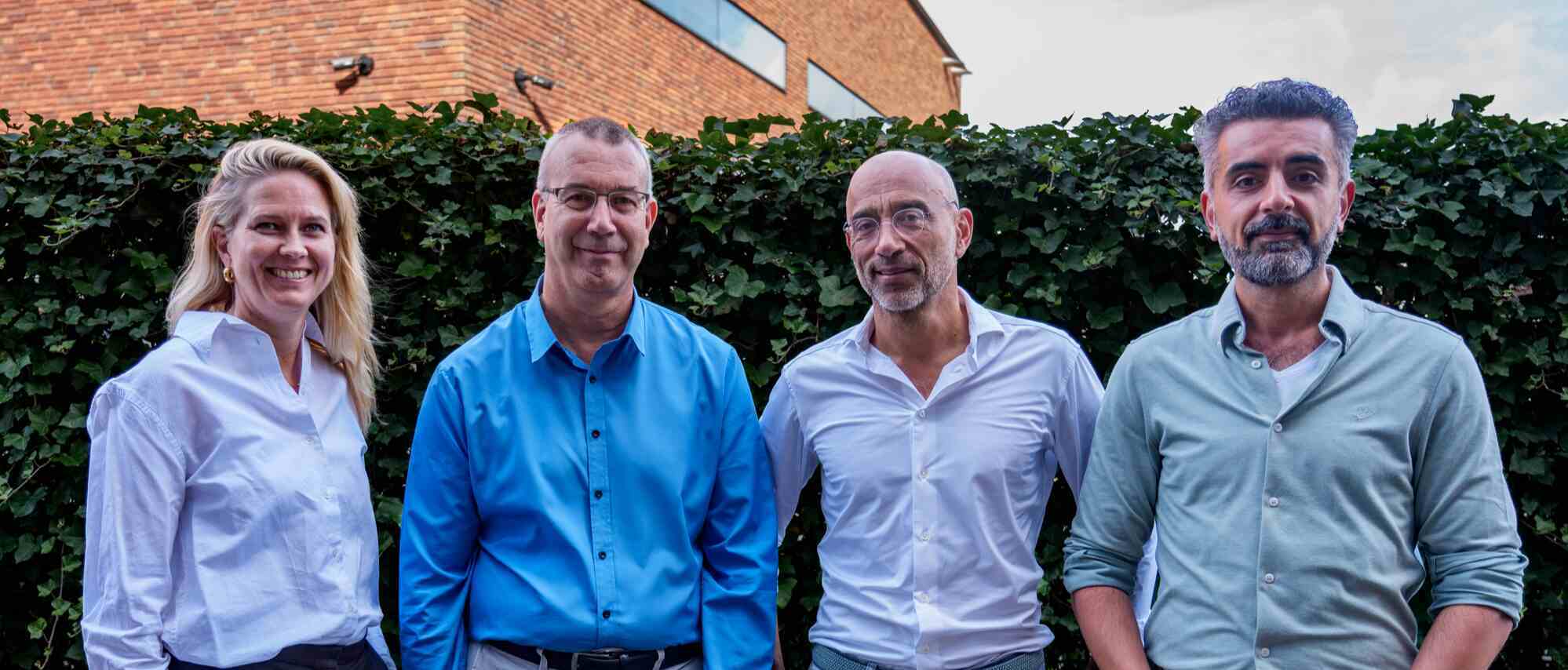How to improve the culture for incident reporting

You need a safe reporting culture and a proactive improvement culture if you want to adopt a structural approach to improving safety and quality within your organization. It is a culture in which everyone is alert to potential risks and in which, in an atmosphere of openness, people are actively engaged in safely reporting incidents. It is an environment in which unsafe situations in processes are easily addressed and improved.
Based on the points listed below we will explain how you can work towards a safe reporting culture and a proactive improvement culture.
- Conditions for improving the reporting culture
- Further explanation of a Just Culture
- Create awareness with the safety culture ladder
- Support for improvement actions
- Safety II as a new approach to improvement
Conditions for improving the reporting culture
In order to learn from incidents, it is important that all incidents and near incidents are reported. Unfortunately, reporting an incident is still often considered an administrative burden that is difficult and redundant. So how do you still ensure a good reporting culture? Below we provide some framework conditions:
- Ensure a safe and open reporting culture: Just Culture. See below for further explanation of the importance of a Just Culture in your organization;
- Make it clear why incidents need to be reported. After all, each incident is a learning opportunity and an opportunity to improve safety in the work place;
- Make reporting quick and easy with an online form that is always accessible via both desktop and mobile devices. Ensure that only those questions are asked that are required for the initial registration and analysis;
- Show what happens after a report has been made, what the follow-up actions are, who is involved and what is expected of the notifying person;
- Ensure feedback of the results to the notifying person and the rest of the department. When people see that a report is actually addressed, the willingness to report will increase. Also show when an improvement action is scheduled based on the incident;
- Involve employees by requesting further information and having them contribute ideas for improvement actions and the assessment thereof.
Further explanation of a Just Culture
From a black-and-white perspective, we can distinguish two cultures that address ‘human errors’ within an organization: On the one hand the retributive culture, based on rules and on the other hand the restorative culture, a Just Culture. A corporate culture centered on trust, learning capacity and accountability.
A retributive culture is based on rules, violation of those rules and penalties. There is a (basic) moral debt that needs to be settled. To the company, the victims, the community. And that payment is a balanced, fair and proportional penalty, that places responsibility with the offender and serves as an example.
In a restorative culture, also called a Just Culture, the emphasis is placed on open and honest sharing of errors made. The focus is not on ‘the offender’ but on ‘the victim’ and how this person can be best assisted. Subsequently, it is important to look at the factors that led to the error. The basic principle here is that human errors occur regularly within a complex organization and therefore there needs to be an open investigation and discussion as to where the error or errors were made, in order to bring about change.
It is important that an organization has a transparent and respectful procedure to assess the role of someone involved in an incident as objectively as possible. Based on the ‘Swiss cheese model’ of psychologist James Reason who extensively investigated and described ‘human errors’, the British National Patient Safety Agency formulated a so-called ‘decision tree’ that can be broken down into four questions:
- Did the person deliberately cause the damage?
- Was their judgement capacity limited? (think of depression or drugs)
- Were there sufficient, effective measures in place to prevent the damage?
- Would someone with the same background in the same situation have done the same?
Asking and answering four relatively easy questions contributes to care providers being addressed justly, which increases trust in the safety of the organization.
People need to be sure that reporting errors is treated justly, that there are no disproportionate consequences. The dilemma is of course that in certain cases you need to call people to account, with the risk that others will remain silent in the future. This is where Just Culture becomes important: to balance accountability with learning.
Just Culture
Read our free eBook to learn more about Just Culture's principles.
-
How does a safety culture lay the foundation for patient safety?
-
Do you know the five conditions for a Just Culture?
-
What role does communication have in this?

Create awareness with the safety culture ladder
In order to create a safety culture, it is important that employees become aware of unconscious behavior. The following interventions contribute to awareness:
- Conducting audits
- Doing safety rounds
- Analyzing and discussing incidents in a team
Awareness can also be created by using the so-called safety culture ladder. Companies can use this tool to enhance safety awareness among employees. By setting up, implementing and testing elements that contribute to safe working and safe behavior, the organization can guarantee safe behavior in the culture. The safety culture ladder can also contribute to the assessment of the existence of a safety culture within an organization, as well as to determine what needs to be done to climb the safety culture ladder, or how to improve the safety culture.
The safety culture ladder distinguishes five different types of safety cultures. The higher the safety awareness within an organization, the higher the score on the safety culture ladder. By using the safety culture ladder, the safety awareness within organizations can be continuously measured and improved.
At the bottom of the safety culture ladder we find the safety culture in denial. Organizations with a safety culture in denial, live in denial and do not want to waste time on safety, because they are convinced that they work safely ….
Some characteristics of a safety culture in denial:
- Environment to identify and report errors is unsafe;
- Serious lack of mutual confidence;
- Management has the erroneous impression that everything goes smoothly;
- The question is not if a calamity will take place, but when.
What is required to create a pro-active safety culture? To develop a safety culture in denial into a reactive or even pro-active culture, more openness about and awareness of risks is essential. In a pro-active culture, employees can report incidents safely and without any fear of sanctions. In addition, they should be guaranteed that the results of analyses lead to targeted improvement actions that will be implemented throughout the organization.


Just Culture: dealing with errors in medical care

The essence of clear communication

Tips for motivating employees to help improve the quality of care

Care professionals, the second victim of a medical incident
Support for improvement actions
The role of management in this process determines the level of success. They must fulfil an exemplary role that shows commitment to and effort towards safe working conditions. Open communication about improvement measures plays an important role in this respect. In doing so, management clearly shows that the importance of learning from incidents and enhancing safety in the work place takes priority.
Dashboards are a powerful tool for internal communication about improvements. They not only allow better understanding of the number of reports, but can also be used to share improvement actions. This promotes the learning capacity of the organization. Improvement actions should not only be discussed within the department, but also with other departments, thus allowing for improvement actions to be shared throughout the organization. Otherwise you end up with silo solutions whereby colleagues in a different department keep causing the same incidents. A ‘learning’ organization can prevent this and effectively guarantee quality improvement in their processes.
Involve the notifying person and other stakeholders in discussing potential improvement actions. They are familiar with the situation in which the error occurred and will have to implement a new procedure. If they come up with the idea themselves, this will increase their support.
Do you want to have a better understanding of the culture in the workplace as an organization? A culture survey allows you to measure to what extent the organization or department has an open or closed culture. Trends become visible so that targeted actions can be taken to gradually improve the culture. The RiskSync platform allows you to conduct these surveys among your staff. You may choose to use the recognized COMPaZ survey, or simply compile a questionnaire yourself.
Safety II as a new approach to improvement
In recent years, a new movement has been unfolding. This approach, called Safety II, is a hot item within the healthcare sector, but can definitely also be applied to other sectors. Safety II focuses on learning from what works well in the workplace, rather than learning from incidents. To further improve the quality and safety in your organization you no longer depend on (near) incidents. Instead, you look at everyday practice and analyze the different situations in the workplace and how people respond to certain (anomalous) situations. This adaptability of employees is the reason that most of the time things actually do go right. Attention to improving employee resilience is essential in the case of Safety II.
The FRAM analysis is a method to map the differences between procedures and daily practice. Not every situation can be laid down in procedures and in daily practice procedures are not always correctly applied either. FRAM investigates in an open and positive way how employees perform their daily tasks. With increased knowledge about this aspect you can start enhancing adaptability in the workplace.
.jpg?width=786&height=574&name=170131%20VIM%20platform%20(1).jpg)
Overview ready-made applications:
We have various ready-made applications for the organization of your incident management. You can quickly start using these applications and adapt them to the specific situation in your organization.
-
Some examples:
- Safety Rounds
- Competence Checklist
- Evaluation Fire Alarm
Incident Management eBook
Read our free eBook for more information about setting up incident management.
-
How do you ensure your organisation learns from incidents?
-
How to modernise to digital incident management?
-
Including tips for analysing incidents.

Benefits TPSC CloudTM software
With our software, a complete Patient Safety platform is ready for you.
Flexible platform
Access anytime, anywhere, securely managed in the cloud. Flexible and scalable to organize due to the modular structure. With many options to adjust each part to your own needs.
Easy implementation
Quick and easy to set up. Due to the user-friendly design, no programming knowledge is required for the implementation. Our consultants are ready to help with your configuration.
Low cost
Our software is a cost-efficient solution for patient safety management, because many of the building blocks have already been made for you! Suitable for both small and large organizations.
Schedule a free online demo or discuss your needs with a specialist.
-
Learn things like creating an incident reporting form
-
See how easily you can analyse incidents and quality-related data
